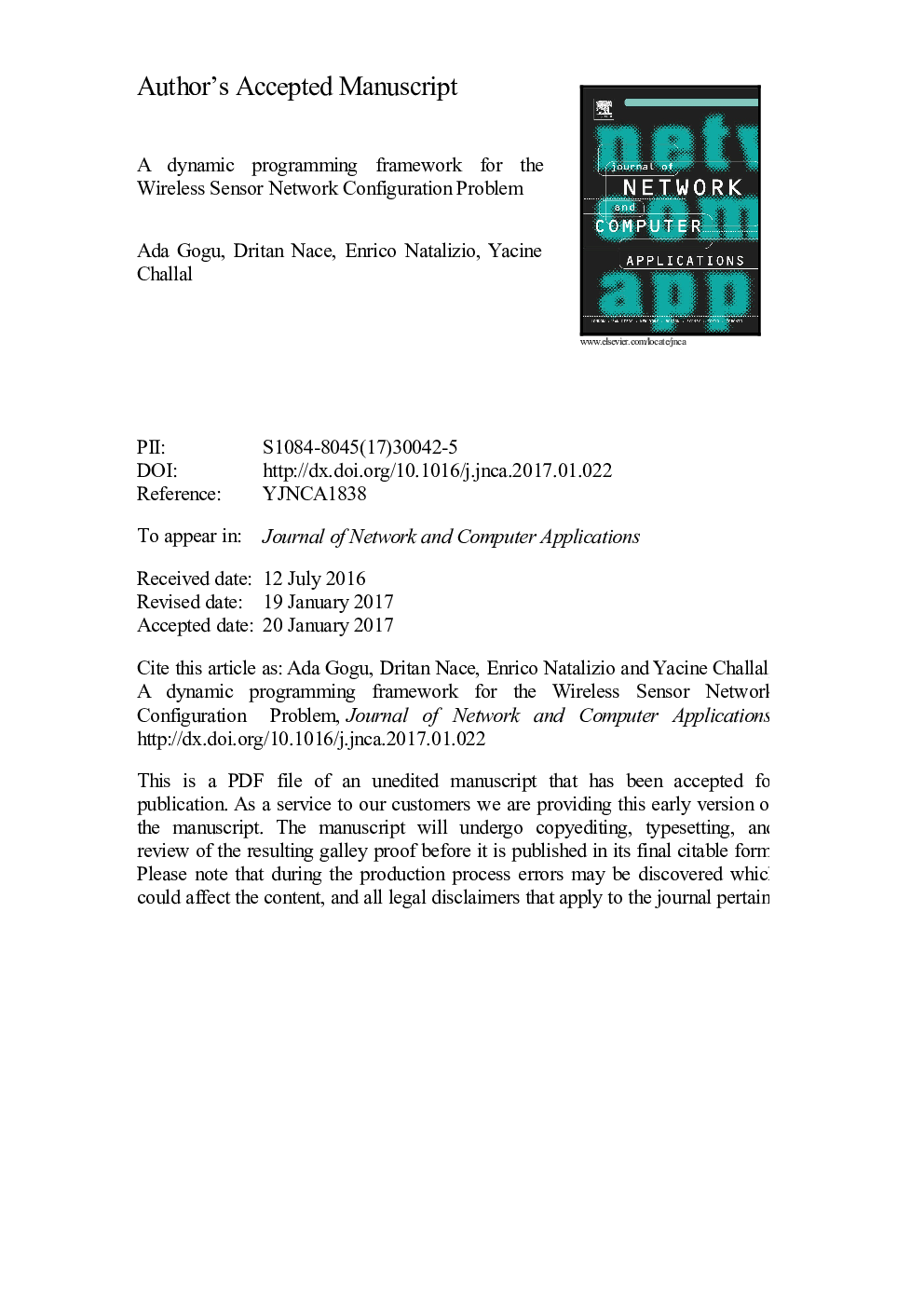| Article ID | Journal | Published Year | Pages | File Type |
|---|---|---|---|---|
| 4956020 | Journal of Network and Computer Applications | 2017 | 23 Pages |
Abstract
This work studies the problem of network configuration for Wireless Sensor Networks (WSN), consisting of two interdependent problems: sensor placement and topology control, by taking into consideration both the traffic load and the transmission range assignment. The design objectives are (i) reducing the overall energy consumption and (ii) ensuring node energy consumption fairness between the sensors. First, the problem of placing the sensors in the optimal positions is studied and then a power control scheme is put in place to manage the topology of the network. For both the two sub-problems, we first consider the one dimensional (or linear) network case and next the two-dimensional case. The two sub-problems are considered within a unifying mathematical framework based on dynamic programming, in order to guarantee the optimality of the solution. The method can easily be adapted to solve the problem for discrete values of transmission range. The method presented in this work shows a low computational complexity in comparison to other methods, and, due to its implementation simplicity, it may be of great help to network designers in the planning phase of WSN deployment.
Related Topics
Physical Sciences and Engineering
Computer Science
Computer Networks and Communications
Authors
Ada Gogu, Dritan Nace, Enrico Natalizio, Yacine Challal,
